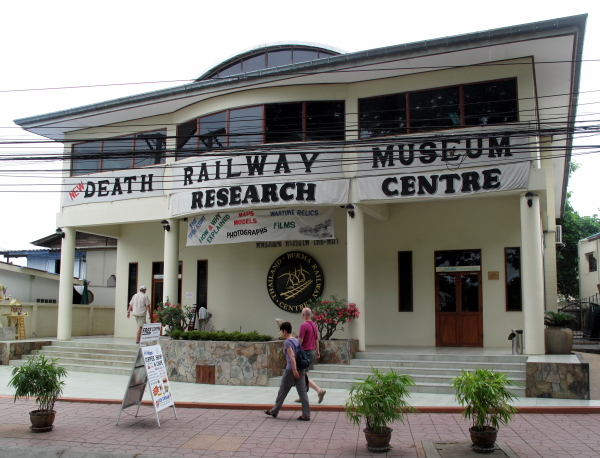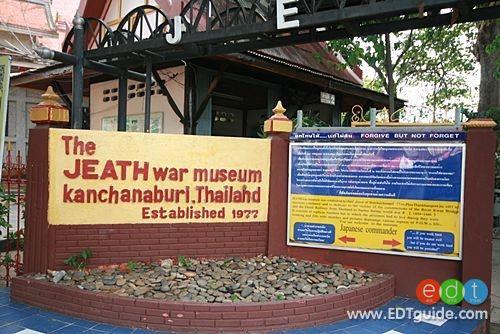[Also see Section 14d]
There are currently two primary museums dedicated to preserving the memory and uncovering the stories of the TBR POWs. The foremost among these is the Thai-Burma Railway Centre founded by Rod Bettie. I cannot tell their story any better than they do themselves on their website. So I will not try. https://www.tbrconline.com/

Next is the original JEATH museum:
https://en.wikipedia.org/wiki/JEATH_War_Museum

[This is NOT to be confused with the newer museum closer to the bridge site that has usurped the name. ]
https://en.wikipedia.org/wiki/JEATH_War_Museum
https://en.wikivoyage.org/wiki/Kanchanaburi
JEATH War Museum #1
(Phíphítháphan Songkhram Wát Tâi (Wat Tai War Museum)), Pak Phraek Rd (Adjacent to the Wat Chaichumphon temple complex 1 km south of town centre). The acronym JEATH stands for the primary nationalities involved in the construction of the railway: Japanese, English, Australian, American, Thai and Holland. The free guide leaflet concludes with these salutary words, “May Peace Always Conquer Violence”. Exhibits are housed in a palm hut, modeled on the type of buildings in which Death Railway POWs would have slept. Also displays a section of the first wooden bridge, recreations of the POW barracks and miscellaneous military paraphernalia. Downstairs is a somewhat incongruous exhibit of prehistoric Thailand complete with semi-erotic murals. The temple complex next door is interesting, although a cross-river boat departing from the riverside is the best attraction. The museum is time-worn, with many of the exhibits rusty or damaged by insects and the weather. Overall it is tatty and amateurish, and it may strike you as an insult to those who suffered here; far superior is the Thailand-Burma Railway Centre.
The newer museum is located some 5 Kms away from the first and is adjacent to the Bridge. It is apparently owned and operated by the entrepreneurs who control the jewelry trade in the nearby market. In the early 1990s, it became embroiled in a controversy concerning the display of skeletal remains that were purported to belong to POWs. It is said that the Australian Embassy became involved and verified that the displayed remains were of Asian ancestry. and mostly likely belonged to romusha workers who had been buried near the end of the war. [see section 19g for that story]
World War II Museum and Art Gallery,
Mae Nam Khwae Rd (About 50 m from the Bridge over the River Kwai) This well-signposted complex houses a bizarre collection of museums and exhibits, most of which are poorly maintained and labelled. To your left as you enter is the “War Museum”, a 4 storey building encrusted with statues, which starts off with a little Burmese shrine but is mostly devoted to pre-WW II Thai history through the ages and is filled with wall paintings of kings and racks of rusty pistols. Above the WWII museum is the most bizarre section, housing (among other things) dusty stamp collections and a gallery with wall paintings of all Miss Thailand winners.
Lastly, a new site has begun development on the opposite river bank immediately adjacent to the Bridge. This is an odd admixture of Japanese and even Nazi symbolism and is designed to look like a Hollywood-set; it in no way resembles the POW encampments along the TBR. It is hard to judge or comment on just what the developer’s plan is striving for.
There is another on-line site that contributes a unique perspective to this saga:
Eduardo Martinez has constructed a memorial website for his US POW father TXNG SSG Homero:
